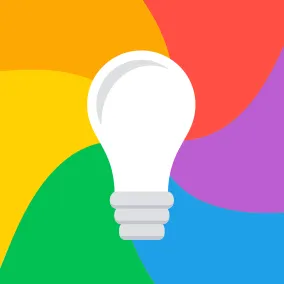Tips for Landing a Design Job

Mindy Wagner, Former Design Director
Article Categories:
Posted on
Advice on what to do (and not do) when applying for a design role.
When we’re looking for design candidates, I spend a good chunk of time combing portfolios and creeping around LinkedIn. It brings back memories of how I felt at the start of my career. Namely... confused and overwhelmed, with no clue what a future employer might be looking for beyond my degree and GPA. (Two things that don’t matter nearly as much as I thought.)
I see a lot of missteps that could easily be avoided. So here are a few tips on landing your next design job:
Show the work you want to do
The importance of a good online portfolio cannot be understated. We look at an applicant’s portfolio before anything else, including cover letters and resumes. Those have to be good too, but first we want to see your skills and creativity.
If you’re applying for a web design job, make sure web design examples are a prominent part of your portfolio. Fine art, 3d animation, photography, and wedding invitations can be great examples of your range. We love to see this stuff in the mix. But if 9 out of 10 of your work examples aren’t related to the job you’re applying for, people will have a hard time judging whether you fit the position. They’ll also wonder if you’re truly passionate about the type of work they’re offering. If you’re using that as filler content because you feel like you don’t have enough work to share, just go with a “less is more” approach. If you’re into drawing something like scantily clad ladies riding dragons, it’s probably best to leave those out entirely.
Think about thumbnails
Make sure your most recent work examples on Dribbble, LinkedIn, and Behance are compelling. When someone is proactively searching for candidates those thumbnails will show up in a list with dozens of others and will probably get no more than a quick scan. Make them worth clicking on.
Keep it simple
Your work might be complex, but the site that showcases it shouldn’t be. Remember that the people looking to hire you are very short on time. They want to get straight to the good stuff. Make it easy on them. Cull the number of projects down to your very best. Avoid overly complicated navigation, overblown themes, lengthy transition animations, and anything else that might distract from your work or deter people from clicking on multiple projects. This is a place where you definitely don’t want novelty to get in the way of functionality.
Review *everything* public-facing
This one seems obvious, but people still forget what is public or assume no one is going to look too closely at their personal accounts. Trust me - if you get past a phone interview, some curious soul will go digging deep into those Google results. A curious soul with zero background knowledge or context for what they might find. You know to share carefully on LinkedIn. But have you checked what your public Pinterest boards look like?
This goes for head shots and avatars too. In your portfolio, on LinkedIn, and on any other “professional” platform, use a photo that feels casual and genuine. Avoid things like crazy poses, flashy sunglasses, glamour selfies, and senior portraits.
Check, double-check, and triple-check links
Seriously. You have no idea how many broken links are floating around in portfolios and profiles. If you’re actively job hunting, set yourself a reminder to do this once every few months.
Watch what you write
We pay as much attention to your presentation skills as we do your visual design work. We want proof that you sweat the details. We also want to know you can communicate clearly and concisely. If you aren’t explaining your design thinking well in writing it’ll be a ding. And if your cover letter has typos, we’ll conclude you are careless. Take time with any written content you put online or submit with your application. And that gratuitous use of the F-word trend? Skip it.
Prepare your pitch
If you get to a phone screen or in-person interview, remember that your verbal communication skills are being evaluated. Designers need to be comfortable pitching ideas to clients. The way you present yourself is our first chance to judge whether you’ll succeed at this. Think ahead of time about what you want to get across. Our best in-person interviews have been with designers who clearly prepared beforehand.
And most importantly...
Show some spark
Highly polished UI designs are in tons of portfolios. Creativity and innovation are not. That’s why we look for design explorations that extend beyond surface level executions.
Try to share work that not only shows your range, but also stands out. If the work you’re doing at your current job doesn’t let you break out of the box, find a personal project that will. Side projects and experimentation are a great way to show a future employer you’re a self-starter, another positive trait we look for.
Join Us! As of press time (March 2017) we are actively seeking a designer to join our team. You can learn more here: https://www.viget.com/careers/...